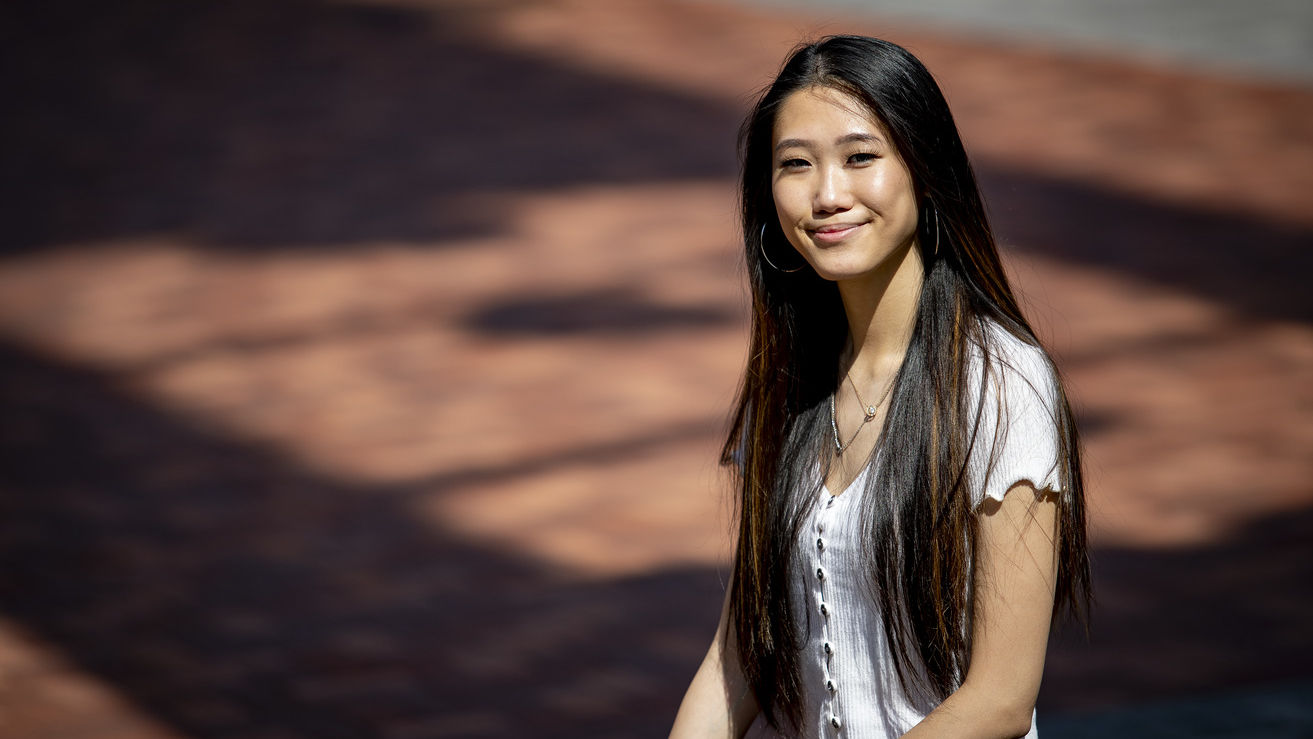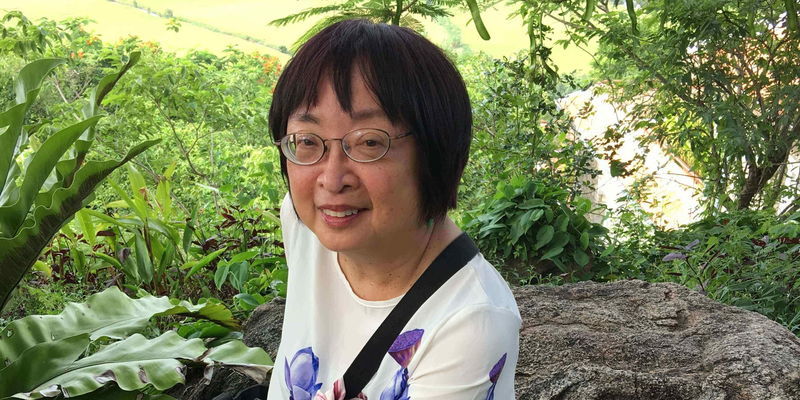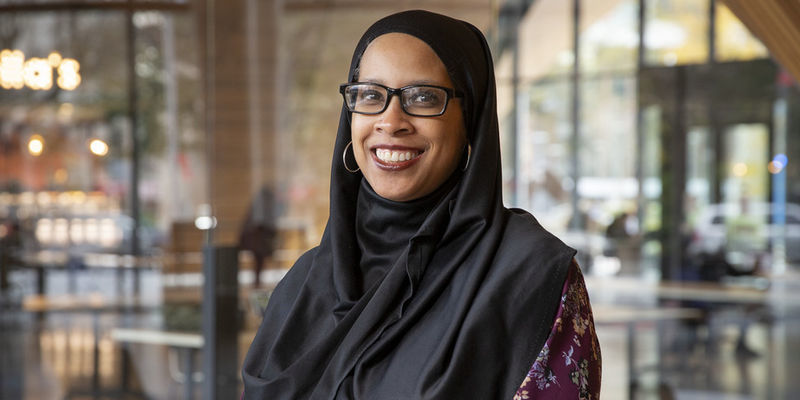Justice Through Art gives students a creative outlet
This social-justice themed competition, sponsored by the Criminal Justice Department, amplified voices of students from minority groups.

Images of police brutality, death and protests flashed across the television screen in Catresa Meyers’s home. As an associate professor of instruction in the Department of Criminal Justice who teaches future law enforcement, and as a Black woman, she felt particularly divided on top of already complex emotions. Unable to join the protest or clear her mind, and watching Black women fade to an afterthought in the emerging conversations, Meyers pulled out her art supplies and got to work.
Gathering images of Black women, from Harriet Tubman to Mae C. Jemison, from protestors to pictures of her own mom, and with a mix of decoupage and patience, Meyers weaved these women’s faces into an elaborate collage gown for Breonna Taylor to wear.
“I know how much it benefitted me to express my feelings through art,” said Meyers. “This past summer proved to me that students want to be involved in social justice, but sometimes protest comes in the form of art, rather than taking to the streets.”
From that spark of inspiration, the Justice Through Art competition was born. The competition, which ran from Feb. 1 to April 5, was open to Temple students. First-place winners in each category received $400 prizes.
Those judging the entries included a mix of graduate students and faculty from the Criminal Justice Department, as well as prominent local artist Eric Okdeh. Their criteria included visual impact, interpretation and creativity, composition and design, and craftsmanship, though the judges put their main focus on the messages that the pieces conveyed.
“One person making a statement can reverberate with others who have been impacted in very unfair ways,” said Meyers. “There was a level of beauty to both winning pieces even though they talked about justice that was being withheld from whole groups of people based on some ignorance.”
The winner of the literary category was “Dangerous Boy,” a poem written by Mick Guile, Class of 2023, who approached the poem as though it was a short story distilled down to its basic message.
After taking the course Intro to Juvenile Justice this past semester, Guile found themself contemplating the factors that lead children to the juvenile justice system.
“There are strong messages about ‘don’t do crime, don’t do drugs,’ but the kids impacted by these things are falling through the cracks,” Guile said. “People need to reach out.”
Inspired in part by labelling theory, Guile wanted to convey how negative labels impacted the development of the poem’s main character. The adult mentors in the unnamed boy’s life already viewed him as a criminal, and so he felt he had no choice but to become one.
“Recently, there was a time when African American youths from inner cities were labelled ‘super predators,’” said Guile. “Not only can that label make kids act out, it can make them paranoid. What is it like to be a child and to be unable to experience childlike innocence, because grown adults are scared of you?”
The winner of the visual category was a documentary entitled “A Side of Light,” by Michelle Wu, Class of 2023. Wu’s winning piece focused on the resilience of the Asian American community, between the mass unemployment and the surge of violence caused by the pandemic.
After seeing her social media feed flooded with xenophobia, discrimination and violence for more than a year, Wu said she wanted to contribute something positive to the discussion. Using the company she co-founded as an outlet, Via Lux Media Collective, Wu set out to tell the stories of Asian Americans during this divisive time. With the involvement of Modero & Company and Asian Americans United, Wu was able to spotlight how these organizations uplifted a struggling community.
“Resilience comes when you examine yourself and realize who you are and that you can create change,” said Wu. “We can’t change how other people view us, but we can change our perspective on our own limitations.”
The piece was originally created for the Community Video Resilience Project (CoViD Resilience Project), a campaign designed to center uplifting stories provided by youths from marginalized communities. In addition to winning Justice Through Art, “A Side of Light” was also featured as the opening for the Philadelphia Asian American Film Festival in November 2020.
“During COVID we’ve seen an increase in hate crimes, but we’ve also seen more people advocate for us and speak with us,” said Wu. “We need to have a voice, but sometimes other people’s voices are louder than ours. If they amplify theirs to help us, we are going to be heard.”
The winning pieces can be viewed on the Justice Through Art website. When Temple students return to campus for the fall semester, Meyers hopes to display the art in the newly remodeled lounge in the Criminal Justice Department and host a celebration ceremony to acknowledge the winners.
Future Justice Through Art competitions are in the works, with the next competition date projected for spring 2022.
“Some students are intimidated, but we aren’t expecting perfection,” said Meyers. “Write a poem, make a sculpture out of aluminum foil, do whatever. It’s all art, it’s all expression.”
—Rayna Lewis


